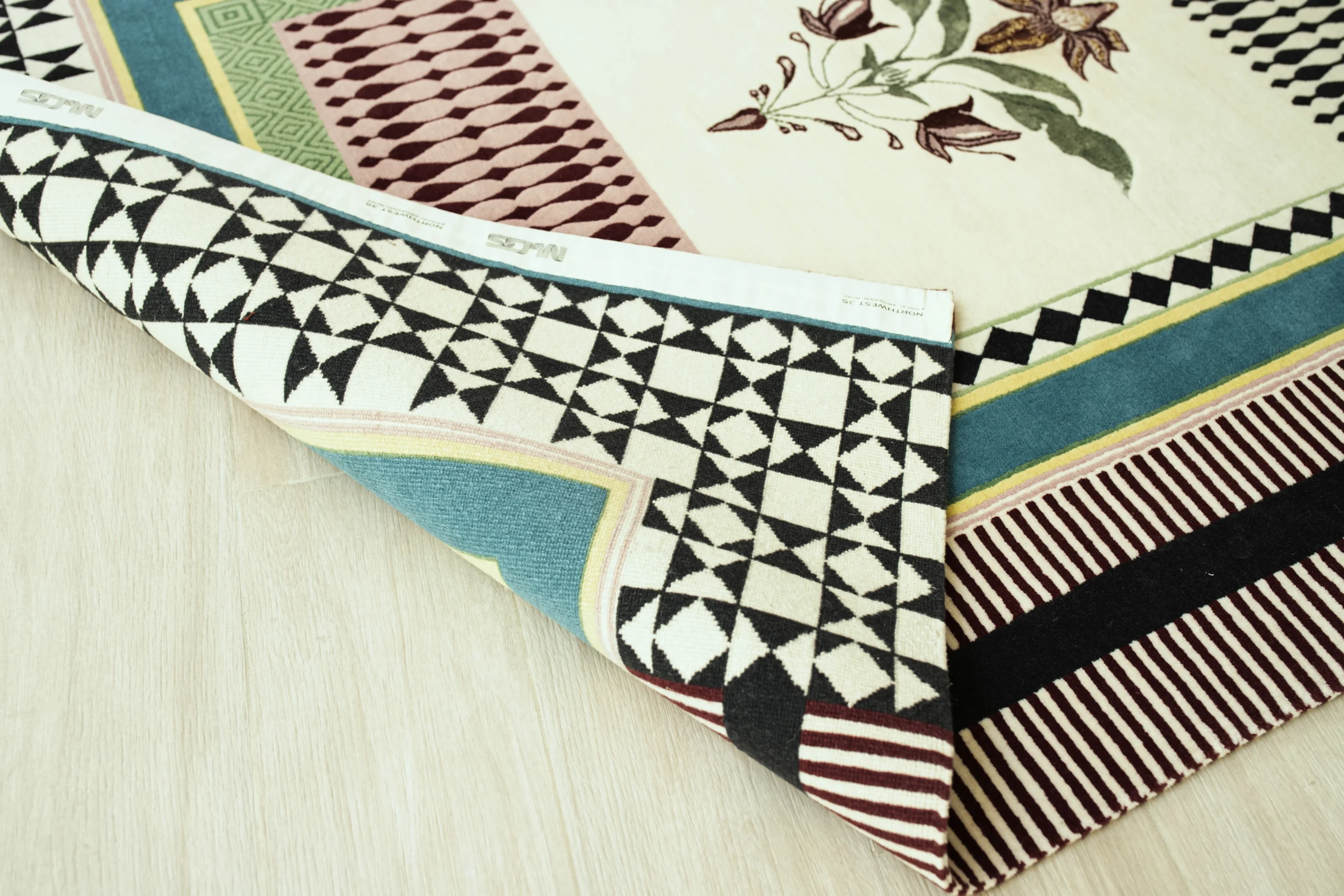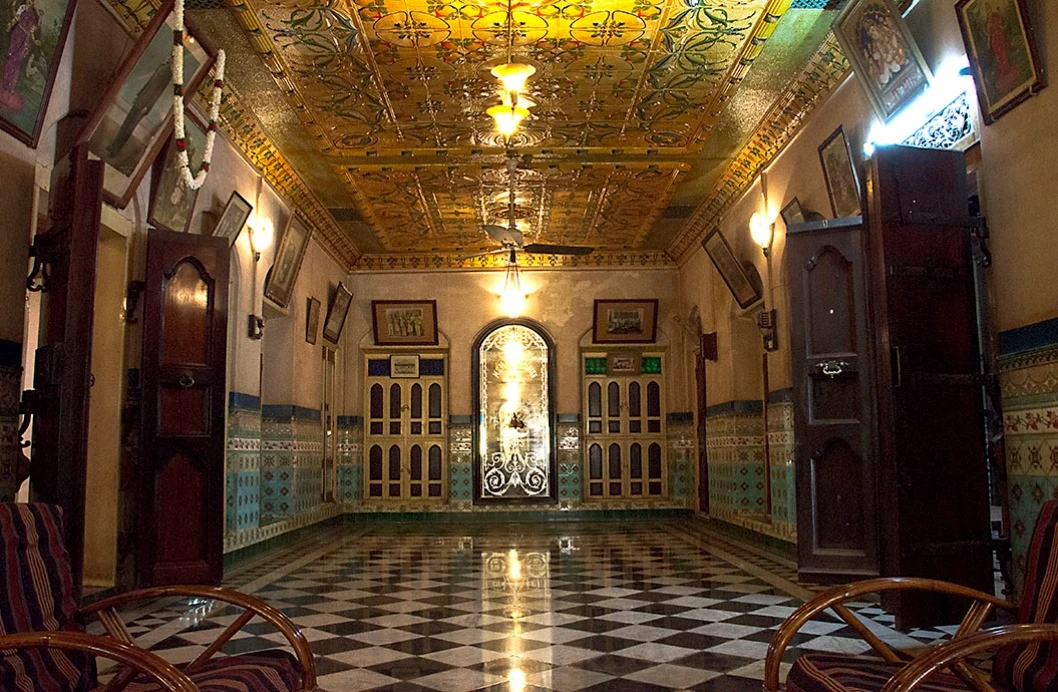
Our flagship Resilience collection is a celebration of versatility, strength in the face of changing circumstances, and the ability to thrive through both the peaks and the valleys of life.
I chose this theme because it resonates strongly with me, and is relevant to each and every one of us. To a greater or lesser extent, we will all have our mettle tested, and cultivating resilience is the key to successfully navigating the inevitable twists and turns of our existence here.
The past several years have challenged our resilience, both individually and collectively, and the unprecedented pace of societal and technological change is questioning our ability to adapt. These times call for fortitude, to find our higher purpose and identity, and pull together to create a better world.
The two main features of the Chettinad perfectly present this capacity to manage change and persist through adversity. In my search for aesthetic inspiration, I chanced upon a pair of design elements that both represent resilience and complement one another beautifully.
The rug’s decorative main motif depicts aspects of the banana plant. Grown in more than three quarters of countries across the world, the banana is a generous and low-maintenance provider of year-round nourishment, withstanding wild weather, and adapting to different environments and climates.
Considered sacred in Hindu mythology, the banana tree is often used in religious ceremonies, and is celebrated across various cultures. Around the globe, the banana represents fertility, prosperity, growth, good fortune and, of course, resilience.
Framing the botanical central subject is a design inspired by the mansions of Chettinad in South India, a distinctive blend of Indian, European and East Asian architectural styles, created by a people at the peak of their prosperity. The Chettiar community have not always enjoyed plain sailing, however.
Legend has it that the Chettiars were originally Tamil fishermen who relocated following the destruction of their villages by a tsunami. Unable to farm the unsuitable land where they found themselves, they became extraordinarily successful merchants and, over the centuries, established a reputation for being trustworthy, innovative and adaptable.
A transition into banking and finance in the 18th century brought power and prominence. Becoming known as the ‘bankers of the east’, their loans to traders, farmers and entrepreneurs facilitated economic growth in the regions in which they operated, and their influence extended beyond India. The Chettiars’ collaboration with the British, during the colonial period, resulted in their financing projects in Burma (Myanmar), Sri Lanka, Malaysia and Singapore, and their role in pioneering private banking made them indispensable.
The opulent Chettinad mansions, constructed in the late 19th and early 20th century symbolised the Chettiars’ growing wealth and status, as well as their cosmopolitan outlook. Incorporating materials imported from around the world, such as Italian marble, Belgian glass, Burmese teak, and Minton tiles from Victorian England, they blended traditional Tamil architecture with colonial influences, to create a distinct style of residence. The grand dimensions and extravagant details reflected the Chettiars’ luxurious lifestyle and their strong emphasis on celebration and festive occasions.

After World War II, the domestic and global landscape changed, along with the Chettiars’ financial fortune. Following Indian independence, the nationalisation of banking, and political shifts in other countries, most notably in Burma, the Chettiars lost many of their overseas assets, and vast amounts of wealth. In response to this potentially devastating setback, they set about transitioning into modern industries, such as real estate, education and manufacturing. Capitalising on their natural resourcefulness and a strong relationship network, both within and outside the Chettiar community, they regrouped and rebuilt their economic presence in India.
Throughout their prosperity, the Chettiars invested not only in business, but in social infrastructure, and were known for their philanthropic activities wherever they conducted their business. Their funding of schools, hospitals and temples helped shore up their community for turbulent times.
The Chettiars have epitomised resilience. Even as they adapted to global trade and financial systems, they preserved their cultural identity. While they integrated foreign influences into their lifestyle and architecture, their social structures, deeply religious practices and unique traditions were maintained. With exceptional versatility, they have repeatedly demonstrated an innate ability to rebuild after significant setbacks. Today, the Chettiars remain an integral part of Tamil Nadu’s cultural and economic landscape.
Our Chettinad rug juxtaposes the soft floral of its central banana motif with the striking symmetry of this architectural style’s bold, but intricate design elements.
The rug is expertly crafted in Nepal with an exceptional 100 New Zealand wool knots per square inch and, in harmony with its gentle elegance, the floral banana feature is woven in banana silk. It is offered in a choice of four designer colourways, each inspired by the vivid interiors of Chettinad mansions. If preferred, it can be custom-made in your own colours, in your chosen dimensions, and made in alternative materials if required. This piece also lends itself perfectly to wall hanging and can be woven in a lighter weight for this purpose.